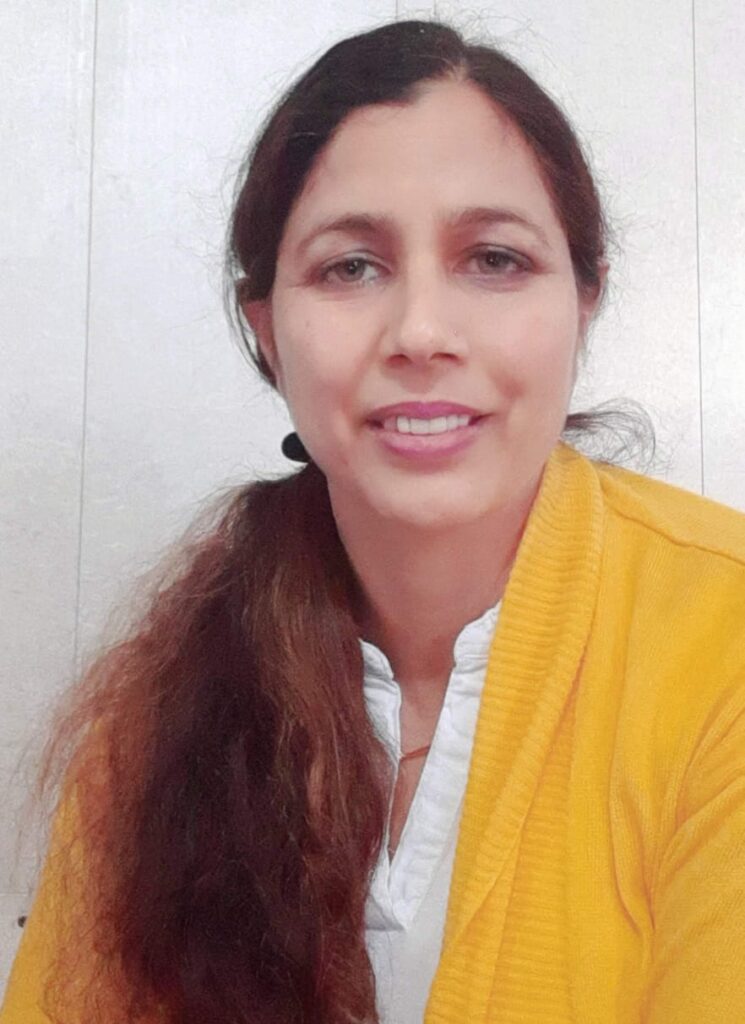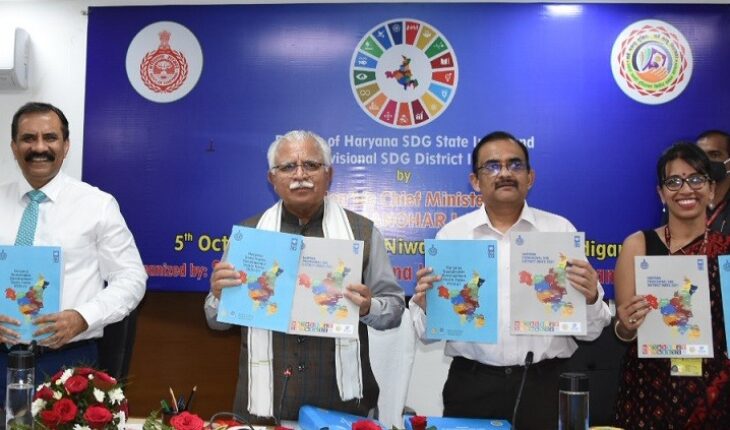
Haryana has been ranked as the fastest-growing state in the NITI Aayog’s Sustainable Development Goal Index 2020-2021 but the situation is grim in Haryana in the area of health and nutrition.
The fact sheet of NFSH(National Family Health Survey)-5(Haryana) provides information on key indicators and trends for Haryana. This survey is the most comprehensive survey to date on the health and nutrition indicators of India’s men, women and children. In Haryana information was gathered from a sample of 18,229 households, 21,909 women, and 3,224 men.
According to NFSH-5, the sex ratio has improved in Haryana from 876 (2015-16) to 926. The fertility rate has declined from 2.1 to 1.9 in NFHS-5 which is better than the national average. Infant and child mortality rate has improved. About 80% of women and 91% of men are literate (refers to women/men who completed standard 9 or higher and who can read a whole sentence or part of the sentence.).In the case of women empowerment, 87% of females usually participate in household decisions and 39% of women are owning a house or land in their name and 73% of women are having a bank account that they themselves use. About 50% of women are having their mobile phones and 18% of women have ever experienced spousal violence.
Although in the above indicators Haryana is ahead national average there is also a black side of the picture. About 70% of children up to age 6 are anaemic in Haryana which is greater than the national average which is 67.1%. The infant mortality rate(35.2) has improved if we compare it with NFHS-4 but the prevalence of anaemia is chronic in Haryana and it is among the top 5 states in India as for as the extent of anaemia is concerned. The more alarming thing about the national average is the 8 percentage points rise in the fraction of children suffering from anaemia from 59% in NFHS-4 to 67% in NFHS-5. About 27.5% of children are stunted and 21.5% are underweight in Haryana in the age group of 0-5 years. According to a report, anaemia is found more chronic in women in comparison to men. In India, About 59% of females are anaemic in the age group of 15-19 and 57% in the age group 15-49, whereas in Haryana 62% of women are anaemic in the age group of 15-19 and 60.4% are anaemic in the age group of 15-49.
While the results of the NFHS are usually mixed, and improvements in certain sectors ride along with stagnation and deterioration in other sectors, this year, there have been radical improvements in maternal and child health, sex ratio and population control. A greater proportion of births than ever before is now happening in institutions, more children in the 12-23 months age group have received their vaccinations, and, most interestingly, the Fertility rate in India as well as in Haryana is decreasing. In Haryana it is 1.9 which is below the national average (2.0), indicating that India has contained the population explosion. Policies, as in the case of the family planning sector, seem to have borne fruit, years after they were implemented. While the gender ratio has, for the first time, recorded more women per 1,000 men, gender ratio at birth in the last five years still underlines the persistence of a deep-rooted son preference especially in middle-class Haryana, one that has to be countered, through policy and law. The initiative of the central govt. increasing the marriage age from 18 to 21 years will definitely improve the health and nutrition levels in the near term by putting more girls in college and enabling women to achieve greater financial independence in the long run in India including Haryana and other states.
Still, malnutrition and anaemia is the biggest challenge for the economy in achieving the Sustainable Development Goal of ending all forms of malnutrition among children under 5. Poor public health is always the most important hurdle in development The major reason behind malnutrition and anaemia is poverty among the lower class and the unhealthy lifestyle of the middle class. Mortality rate and longevity of life have improved because of health facilities but still, there is a need for a targeted distribution system of healthy food for poor people in the state. Mid-day meal schemes should include nutritious food. A health slogan of ‘food should be medicine and medicine should be food ‘should be started in near future. Although only 8% of people are below the poverty line in Haryana according to NITI Aayog’s multidimensional poverty measures but the poverty among this small section is severe. NFHS-5 is national and sub-nationally at the state and district levels representative, so its findings on children’s nutritional status can help policymakers identify critical areas where better policy can provide course correction. Since India has the most malnourished children in the world, it’s worth analysing what NFHS-5 has to say about India’s progress towards achieving UN Sustainable Development Goal (SDG) 2.2.
Haryana has reported considerable improvement in the sex ratio reflecting the effective implementation of the ‘BetiBachaoBetiPadhao’ scheme, launched by Prime Minister NarendraModi in January 2015.
A 57-point rise in the sex ratio at birth in the last five years (females per 1,000 males) has been recorded in Haryana, as per the National Family Health Survey-5 (2020-2021).
The sex ratio witnessed an increase from 876 (NFHS-4 2015-16) to 926 in NFHS-5 while the sex ratio at birth recorded an increase from 836 to 893 (2020-21). Chief Minister ManoharLal has congratulated the officers involved in this campaign and said that the BetiBachao-BetiPadhao campaign will continue and the State will soon reach the 950 mark in gender ratio at birth (girl child).
Dr.Harvinder Kaur, Associate Professor in Economics, Ambala, views are personal.




